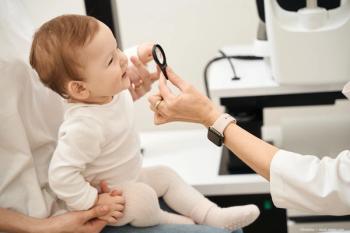
Surveying the artificial tear landscape
Patients use artificial tears for different reasons and diverse conditions. While available products supplement tear production and provide relief, few distinctions between drops have been clearly established. Recent studies show that direct comparison of a new product to an older, established one and use of “real-world” metrics can be most useful to prescribers.
By Gail Torkildsen, MD; Special to Ophthalmology Times
Artificial tears are the mainstay of therapy for many ocular surface conditions, including allergic conjunctivitis, postoperative discomfort, dry eye disease, or any type of nonspecific ocular irritation.
Despite many comparisons of the various tear substitutes currently on the market, there are few clearly established distinctions between drops-all supplement native tear production and all provide transient relief from ocular discomfort, regardless of the underlying etiology.
The conditions for which patients use an artificial tear are nonetheless diverse, so a one-size-fits-all approach will not meet the needs of every patient.
The limitations of this approach can be exemplified by selection of an artificial tear for a patient with dry eye; this is probably the clearest case of “one size does not fit all.” While different patients will benefit more or less from the same drop, in most cases we can ascribe this only to idiosyncratic factors.1
There has been progress on this front. Recent studies confirm that drop formulations can be tailored to conditions such as aqueous deficient dry eye or to disease profiles where there is a lipid or mucin deficiency.2
Dry eye disease, however, is still a condition where an empirical approach to drop selection is the standard practice.
Patients who use drops for other issues, such as allergy, are likely to go through a similar process to find a drop that works best.
What makes a good eye drop?
Key to efficacy of any eye drop is its duration of action. A drop that can provide symptomatic relief for a longer duration can overcome a major limitation to most products: the need for repeated dosing.
While this aspect of drop use has not been studied sufficiently, we know that it is not uncommon for dry eye patients to use their drops hourly. There is a risk that such repeated dosing could be self-defeating, especially for the many formulations that contain preservatives, such as benzalkonium chloride, which is thought to exacerbate some dry eye symptomology.
Improving on the trial-and-error method of drop selection requires information, and although the picture is improving, only limited data are available on differences between different drop formulations.
Most clinical studies (about two-thirds) do not involve head-to-head designs that provide the best comparative information,3 and the most recent assessments rate the overall quality of published clinical studies as uneven.4
Trials and errors
A big focus of late has been on drop additives (excipients) such as hyaluronic acid or its derivatives, ingredients that, while not considered actives, can still improve the performance of the drop. Most of these are water-soluble polymers that can improve the fluid properties and sheer dynamics of tear formulations.5 These products are established components of tissue lubricants and ocular products in veterinary use.
Several studies on hyaluronic acid formulations for dry eye have been published recently. Unfortunately, these studies demonstrate the limitations inherent in some trial designs that compare artificial tear products to saline alone. While they may demonstrate efficacy in relief of dry eye, they provide little in the way of a real-world assessment.6
Another type of study design involves switching patients from their current therapy to a test preparation.
A recent report using this strategy showed improvements in two test groups: add-on, in which the test agent active ingredient was added to the subjects’ current eye drop, and replacement, in which other active lubricants were removed from the formulation.7 While the test agent demonstrated improvements in dry eye signs and symptoms, there was no clear negative control and no positive comparator, so the study again provided another formulation to the list of candidates without differentiating between products.
Head-to-head
A closer look at these global assessments suggests that better information is likely to come from head-to-head comparisons involving at least one known product.
The review by Moshirfar and collegues3 outlining a retrospective of recent studies provides one of the best measures of comparison for different commercially available artificial tears. Several product lines-notably Refresh (Allergan), Systane (Alcon Laboratories), and Blink (Johnson & Johnson Vision)-all performed well in studies that compared them directly with another established product. These are the types of studies that provide the best gauge of how individual products will perform for our patients.
A recently-published study adds an additional twist to the head-to-head paradigm.8 Using both traditional metrics and several measures designed to provide a more “real-world” assessment of drop performance, this study tested a new product (Rohto Dry-Aid, Mentholatum Co.) against a popular, currently marketed eye drop. Both formulations significantly improved measures, such as corneal staining and ocular discomfort.
The study also included diary-based measures of symptoms occurring during routine daily activities and symptom variation over the course of a day. This is an important advance for several reasons.
One of the most predominant complaints of dry eye sufferers is the impact of their disease on quality-of-life metrics-such as reading, driving, and computer or smartphone use-so measures of these activities provide an improved metric of therapeutic effectiveness.
In addition, dry eye tends to become progressively worse over the course of the day, so that the impact of the disease is greatest in the evening. Daily diaries allow for an assessment of therapeutic duration, again providing a more realistic assessment of how well treatments are working.
The new product scored better than its positive comparator in both of these categories.
Information is key to any decision-making process. Ideally, future assessments of artificial tear products will include these real-world metrics, which can aid in the selection of the most effective tear supplements for our patients.
References
1. Essa L, Laughton D, Wolffsohn JS. Can the optimum artificial tear treatment for dry eye disease be predicted from presenting signs and symptoms? Cont Lens Anterior Eye. 2017 Aug 12. pii: S1367–0484(17)30234–5.
2. Garrigue JS, Amrane M, Faure MO, et al. Relevance of lipid-based products in the management of dry eye disease. J Ocul Pharmacol Ther. 2017;33:647–661.
3. Moshirfar M, Pierson K, Hanamaikai K, et al. Artificial tears potpourri: A literature review. Clin Ophthalmol. 2014;8:1419–1433.
4. Pucker AD, Ng SM, Nichols JJ. Over the counter (OTC) artificial tear drops for dry eye syndrome. Cochrane Database Syst. Rev. 2016 Feb 23; 2:CD009729.
5. Simmons PA, Vehige JG. Investigating the potential benefits of a new artificial tear formulation combining two polymers. Clin Ophthalmol. 2017;11:1637–1642.
6. Pinto-Fraga J, López-de la Rosa A, Blázquez Arauzo F, et al. Efficacy and safety of 0.2% hyaluronic acid in the management of dry eye disease. Eye Contact Lens. 2017;43:57–63.
7. Chung SH, Lim SA, Tchach H. Efficacy and safety of carbomer-based lipid-containing artificial tear formulations in patients with dry eye syndrome. Cornea. 2016;35:181–186.
8. Torkildsen G, Brujic M, Cooper MS, et al. Evaluation of a new artificial tear formulation for the management of tear film stability and visual function in patients with dry eye. Clin Ophthalmol. 2017;11:1883–1889.
Gail Torkildsen, MD
Dr. Torkildsen is in private practice in Andover, MA, and also does consulting in ophthalmic clinical research. She did not indicate any proprietary interest in the subject matter.
Newsletter
Don’t miss out—get Ophthalmology Times updates on the latest clinical advancements and expert interviews, straight to your inbox.



















































.png)


